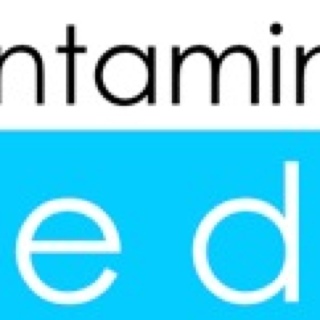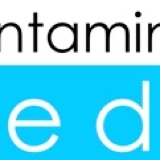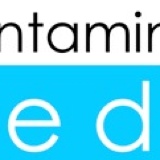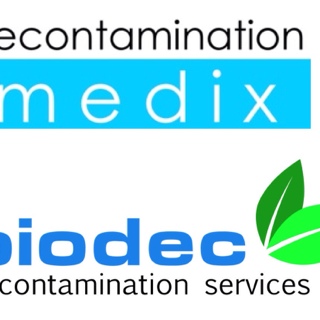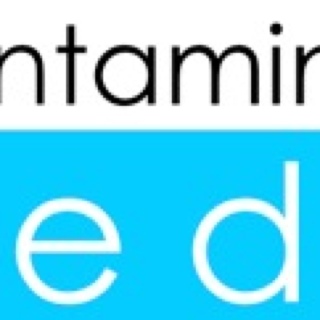Information
-
SSSP and Task Analysis for
-
Site Address
-
Conducted on
-
Prepared By
SSSP
ABOUT THE SSSP
-
- This SSSP is unique to each site being worked on. It is to be completed by the accreditation contractor prior to the commencement of work and submitted, along with the quote, for acceptance.
- The SSSP is a live document and must be updated during the work process to address changes to site hazards and workers on the site.
- The occupants of the property must be inducted into the SSSP. Occupants who are relocating off-site during the repair work must be advised of all precautions they must take if they return to their home at any time during the repair process.
1.0 SITE REQUIREMENTS
-
✅ Site Specific Safety Plan (copy attached)
Location Onsite - Front Door -
✅ Site Evacuation Plan (copy attached)
Location Onsite - Front Door -
✅ Site Hazard Register (copy attached)
Location Onsite - Front Door -
✅ Site Induction To Be Used On This Site
Location Onsite - Front Door -
✅ Site Hazard Board To Be Used On This Site
Location Onsite - Front Door -
✅ Site Sign In Sheet To Be Used On This Site
Location Onsite - Front Door -
✅ First Aid Kit Available Onsite
Location Onsite - Front Door -
✅ Fire Extinguisher Available Onsite
Location Onsite - Front Door -
Any Council Permits Required
-
List of permits Required
-
✅ Hazardous Substances Used Onsite
Location of SDs Onsite - Front Door -
✅ All Hazardous Substances Listed On Hazard Register
Location Onsite - Front Door -
Notes Regarding Other Site Requirements
2.0 HIGH RISK WORK
-
- If High Risk work is being undertaken then a Task Analysis must be submitted for each high risk job.
- All persons involved in High Risk must have received instruction and have read and understood the relevant Task Analysis, and be competent to complete the task they are assigned. -
Are Any Of The Following High Risk Works Being Carried Out?<br><br>1. Friable Asbestos Work?<br>2. Non-Friable Asbestos Work?<br>3. Major Demolition Work?<br>4. Use of Elevating Work Platforms Required?<br>5. Any Working on Roofs Required?<br>6. Work in Confined or Restricted Spaces Required?<br>7. Work within 4.0m of Overhead Power Lines?<br>8. Is there any other High Risk Work?
-
Which High Risk Work is Being Carried Out for This Job?
- Asbestos Work
- Major Demolition Work
- Use of elevation Platforms
- Working on Roofs
- Working in confined/restricted space
- work within 4.0m of overhead powerlines
- Other high risk work
-
Description of a High Risk work
-
Task Analysis Attached For Each High Risk Work?
3.0 NOTIFIABLE WORK
-
Work defined by the MBIE Labour Group as 'Notifiable Work' (including 'Restricted Work') must be notified to the Labour Group by the Contractor using the appropriate documents.
-
Any Notifiable Work being carried out?
-
Has MBIE Labour Group been notified?
4.0 ACKNOWLEDGEMENT OF RESPONSIBILITIES
-
1. I confirm that all employees and sub-contractors to be working on site will have completed an induction course and will be in possession of a valid Identification Card.
2. I confirm all staff and sub-contractors working on site will be informed of the site rules (EQR Rules).
3. I confirm Tool Box Talks will be carried out and all Safety Alerts communicated to staff and sub-contractors.
4. I confirm that all persons on site will be competent to complete assigned tasks or will be fully supervised by someone who is.
5. I am aware of the hazards identified on this site and of my responsibilities to identify any additional hazards and take all practicable steps to eliminate, isolate or minimise those hazards. -
Person Completing SSSP
-
Date
HIGH RISK WORK TASK ANALYSIS
-
High Risk Works being carried out (Not already covered in General Task Analysis)
- Asbestos Work
- Major Demolition Work
- Use of elevation Platforms
- Working on Roofs
- Working in confined/restricted space
- work within 4.0m of overhead powerlines
- Other high risk work
ASBESTOS
-
Does MBIE Labour Group need to be notified?
-
Specialist Asbestos Task Analysis has been compiled
-
refer to General Task Analysis for details on common tasks
MAJOR DEMOLITION WORK
-
Does MBIE Labour Group need to be notified?
-
TASK ANALYSIS STEPS
Step
-
Description of Step
-
For this step I could
- Strain or sprain my back or other muscle
- Be caught in, on or between anything
- Slip, trip or fall from height, on the same or lower level
- Be injured by poor plant/job design
- Be struck by or against anything
- Come in contact with a hazardous substance
- Come in contact with an energy source
-
Which Control Method I will use (describe how, photo if possible)
-
refer to General Task Analysis for details on common tasks
USE OF ELEVATING WORK PLATFORMS
-
Does MBIE Labour Group need to be notified?
-
TASK ANALYSIS STEPS
Step
-
Description of Step
-
For this step I could
- Strain or sprain my back or other muscle
- Be caught in, on or between anything
- Slip, trip or fall from height, on the same or lower level
- Be injured by poor plant/job design
- Be struck by or against anything
- Come in contact with a hazardous substance
- Come in contact with an energy source
-
Which Control Method I will use (describe how, photo if possible)
-
refer to General Task Analysis for details on common tasks
WORKING ON ROOFS
-
Does MBIE Labour Group need to be notified?
-
TASK ANALYSIS STEPS
Step
-
Description of Step
-
For this step I could
- Strain or sprain my back or other muscle
- Be caught in, on or between anything
- Slip, trip or fall from height, on the same or lower level
- Be injured by poor plant/job design
- Be struck by or against anything
- Come in contact with a hazardous substance
- Come in contact with an energy source
-
Which Control Method I will use (describe how, photo if possible)
-
refer to General Task Analysis for details on common tasks
WORKING IN CONFINED/RESTRICTED SPACE
-
Does MBIE Labour Group need to be notified?
-
TASK ANALYSIS STEPS
Step
-
Description of Step
-
For this step I could
- Strain or sprain my back or other muscle
- Be caught in, on or between anything
- Slip, trip or fall from height, on the same or lower level
- Be injured by poor plant/job design
- Be struck by or against anything
- Come in contact with a hazardous substance
- Come in contact with an energy source
-
Which Control Method I will use (describe how, photo if possible)
-
refer to General Task Analysis for details on common tasks
WORKING WITHIN 4.0M OF OVERHEAD POWERLINES
-
Does MBIE Labour Group need to be notified?
-
TASK ANALYSIS STEPS
Step
-
Description of Step
-
For this step I could
- Strain or sprain my back or other muscle
- Be caught in, on or between anything
- Slip, trip or fall from height, on the same or lower level
- Be injured by poor plant/job design
- Be struck by or against anything
- Come in contact with a hazardous substance
- Come in contact with an energy source
-
Which Control Method I will use (describe how, photo if possible)
-
refer to General Task Analysis for details on common tasks
OTHER HIGH RISK WORK
-
Does MBIE Labour Group need to be notified?
-
OTHER HIGH RISK WORK
HIGH RISK WORK
-
Brief Description of High Risk Work
-
TASK ANALYSIS STEPS
Step
-
Description of Step
-
For this step I could
- Strain or sprain my back or other muscle
- Be caught in, on or between anything
- Slip, trip or fall from height, on the same or lower level
- Be injured by poor plant/job design
- Be struck by or against anything
- Come in contact with a hazardous substance
- Come in contact with an energy source
-
Which Control Method I will use (describe how, photo if possible)
-
refer to General Task Analysis for details on common tasks
GENERAL TASK ANALYSIS
DAILY
-
STEP 1: Assess property for external hazards
-
STEP 2: Familiarise customer with process and requirements
-
STEP 3: Erect signs and barricades and/or check existing signs and barricades
-
STEP 4: Don PPE according to task requirements as below
TASK SPECIFIC
-
STEP 5: Follow steps as required by job tasks
-
Tasks Associated with this job
- ECC and/or Air Sampling
- Sub Floor Decontamination Treatment
- Full Internal Decontamination Treatment
- Part Internal Decontamination Treatment
- Physical Contamination Removal
- Other
ECC AND/OR AIR SAMPLING TASK ANALYSIS
-
A) Use Equipment as required
Potential Hazards: Electrical Hazards
Control Methods: Minimise - Ensure all items are used through RCDs and have current electrical tags. -
B) Record observations including any clients comments
-
C) Take samples as required
Potential Hazard: Samples may need to be taken in confined spaces and/or contaminated zones
Control Methods: Minimise - Ensure required PPE is worn, there is more than one person onsite and
emergency tools are close at hand. If in confined space refer to -
D) Ensure correct signage being left onsite for this step is secure and visible
SUB-FLOOR DECONTAMINATION TREATMENT TASK ANALYSIS
-
A) Ensure all occupants and pets are out of the area to be decontaminated
Potential Hazard: Pets/animals often claim shelter under houses and can be adversely
affected by treatment
Control Methods: Eliminate - Ask occupants to remove the animals from the property/area
while treatment is in progress. Check area to ensure none
remain, board up access points so other animals cannot enter
while treatment is in progress -
B) Block all foundation vents
-
C) Load in equipment
Potential Hazard: Electrical Hazard
Control Methods: Isolate/Minimise - Ensure all items are used through RCDs and
have current electrical tags. Make sure cords
are not across walkways where possible. -
D) Load in disinfectants and ensure they are safely stored and mixed
Potential Hazard: Spillages, accidental mixing (chemical cocktail)
Control Method: Minimise - Only remove from the van products that are
required at any one time. Ensure they are stored
and put away from any other products in the property -
E) Treat Subfloor
Potential Hazard: Treatment is generally in a confined and contaminated zone
Control Methods: Minimise - Ensure there is more that one person onsite,
emergency tools are close at hand and required
PPE is worn -
F) Ensure correct signage being left onsite for this step is secure and visible
DECONTAMINATION OF INTERNAL ENVELOPE
-
A) Take samples as required
Potential Hazard: Samples may need to be taken in confined spaces and/or contaminated zones
Control Methods: Minimise - Ensure required PPE is worn, there is more than one person onsite and
emergency tools are close at hand. If in confined space refer to -
B) Ensure all occupants and pets are out of the area to be decontaminated
Potential Hazard: Pets/animals often claim shelter under houses and can be adversely
affected by treatment
Control Methods: Eliminate - Ask occupants to remove the animals from the property/area
while treatment is in progress. Check area to ensure none
remain, board up access points so other animals cannot enter
while treatment is in progress -
C) Load in equipment
Potential Hazard: Electrical Hazard
Control Methods: Isolate/Minimise - Ensure all items are used through RCDs and
have current electrical tags. Make sure cords
are not across walkways where possible. -
D) Load in disinfectants and ensure they are safely stored and mixed
Potential Hazard: Spillages, accidental mixing (chemical cocktail)
Control Method: Minimise - Only remove from the van products that are
required at any one time. Ensure they are stored
and put away from any other products in the property -
E) Apply surface treatments
-
F) Set VHP and close up home
-
G) Ensure correct signage being left onsite for this step is secure and visible
-
H) Upon re-entry, test VHP levels. Only re-enter if daft to do so
Potential Hazard: Someone enters before it has been deemed safe
Control Methods: Ensure correct hazard signs are on all entry points
and if in doubt wear correct PPE
PHYSICAL CONTAMINATION REMOVAL
-
A) Take samples as required
Potential Hazard: Samples may need to be taken in confined spaces and/or contaminated zones
Control Methods: Minimise - Ensure required PPE is worn, there is more than one person onsite and
emergency tools are close at hand. If in confined space refer to -
B) Ensure contaminated material is disposed of in the correct manner
Potential Hazard: Cross-contamination or contamination spreading
Control Methods: Isolate - Ensure contaminated material is contained and
disposed of in the correct manner. -
C) Ensure correct signage being left onsite for this step is secure and visible
JOB COMPLETION
-
STEP 6: Remove signage not being left onsite
-
STEP 7: Check site and leave
SITE EVACUATION PLAN
EMERGENCY RESPONSE PLAN
-
In the event of an emergency requiring the shutdown and/or evacuation of the site the following procedure will apply:
1. Notify all persons on site of the emergency.
2. Shutdown all plant and equipment.
3. Proceed immediately to the designated safe assembly point by the safest identifiable route.
4. Remain at the Assembly Point until all persons are accounted for.
5. Do not return to the work site unless authorised by emergency services and/or site supervisor. -
In the event of an emergency the SITE SUPERVISOR or designated safety person shall:
1. Ensure all persons are accounted for.
2. Ensure Emergency Services have been called if required.
3. Ensure somebody is assigned to meet emergency services.
4. Notify Main Contractor of the emergency and liaise with Contracts Supervisor as required.
5. Liaise with Emergency Services and Contracts Supervisor prior to returning to work.
6. Ensure the site is safe prior to returning to work.
REPORTING OF INCIDENTS
-
- All accidents and incidents (events that resulted in or may have resulted in injury or illness) must be reported to Main Contractor and recorded.
- All serious harm and serious near-hits must be fully investigated.
- All serious harm injuries must be reported to the MBIE Labour Group and Main Contractor as soon as possible and within 1 hour.
EMERGENCY CONTACT DETAILS
-
POLICE FIRE AMBULANCE 111
-
NEAREST MEDICAL CENTRE
-
SERIOUS HARM MBIE Labour Group 0800 20 90 20
-
SPILLS/POLLUTION Environment Canterbury 03 366 4663 (ChchResidential) 0800 75 55 88 (Canterbury Area)
-
POISONING National Poisons Centre 0800 76 46 66
-
ANIMAL CONTROL CCC Dog Control 03 941 8999
-
POWER SUPPLY ISOLATION Orion 0800 363 9898
INITIAL SITE HAZARD REGISTER
-
The following Hazards have been identified on this site. It is the responsibility of all persons involved with this job to identify any new hazards that may be introduced during the course of the work and to ensure they are added to the register.
-
POTENTIAL HAZARD OR RISKS (Hazard or Risk Identified)
HAZARD
-
DESCRIPTION OF POTENTIAL HAZARD OR RISK
-
IS THIS A SIGNIFICANT HAZARD (Y/N)<br>
-
METHOD OF HAZARD CONTROL (Describe)<br>
-
RESPONSIBILITY (Person/s responsible for ensuring controls are implemented)<br><br>
SITE HAZARD REGISTER
-
The following Hazards have been identified on this site. It is the responsibility of all persons involved with this job to identify any new hazards that may be introduced during the course of the work and to ensure they are added to the register.
-
HAZARD
-
POTENTIAL HAZARD OR RISK (Hazard or Risk Identified)
-
SIGNIFICANT HAZARD (Y/N)
-
METHOD OF HAZARD CONTROL (Eliminate, Isolate, Minimise)
-
DESCRIPTION OF METHOD OF HAZARD CONTROL
-
RESPONSIBILITY (Person/s responsible for ensuring controls are implemented)
-
HAZARD
-
POTENTIAL HAZARD OR RISK (Hazard or Risk Identified)
-
SIGNIFICANT HAZARD (Y/N)
-
METHOD OF HAZARD CONTROL (Eliminate, Isolate, Minimise)
-
DESCRIPTION OF METHOD OF HAZARD CONTROL
-
RESPONSIBILITY (Person/s responsible for ensuring controls are implemented)
